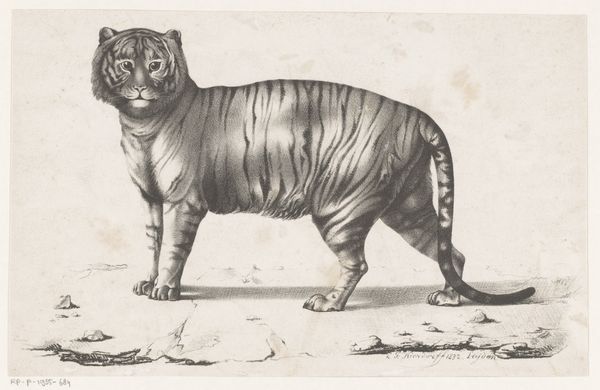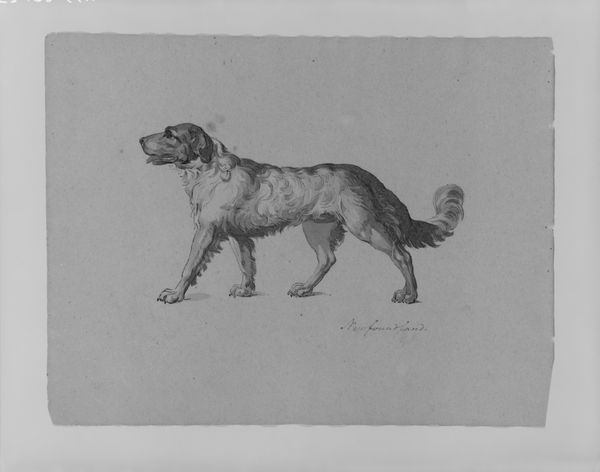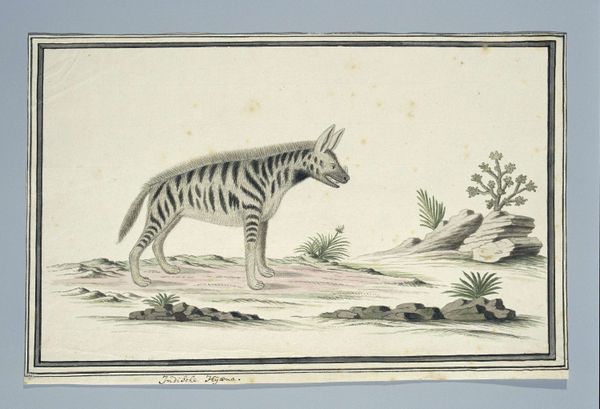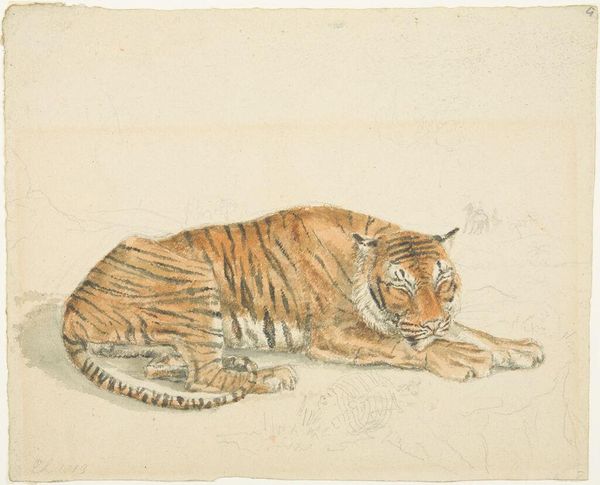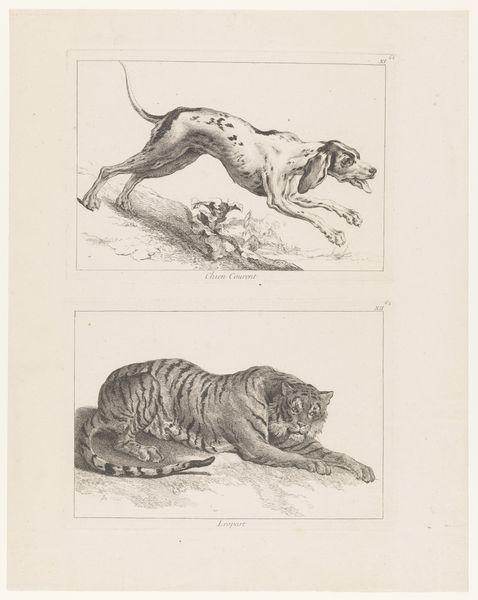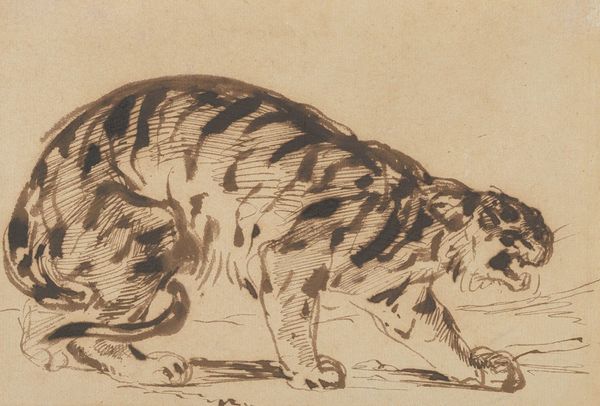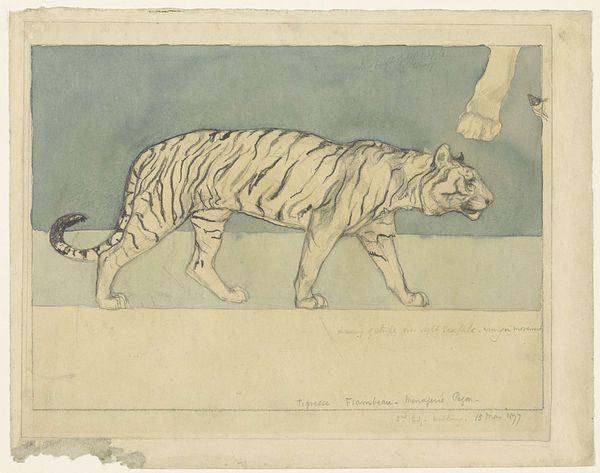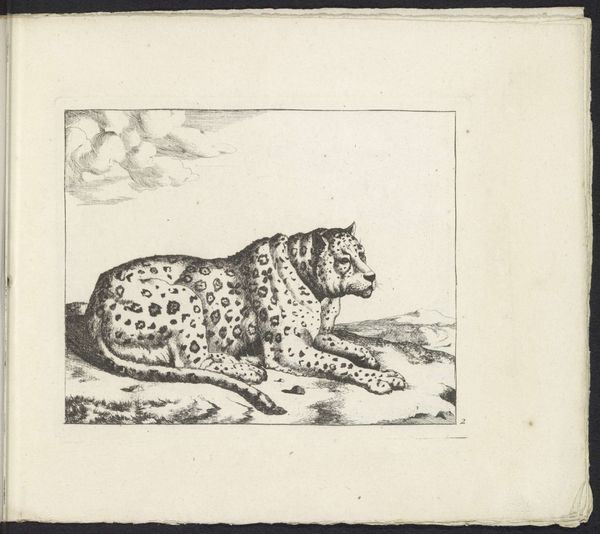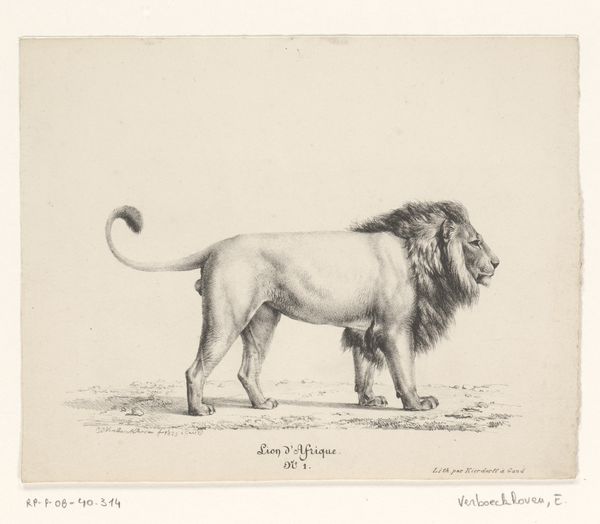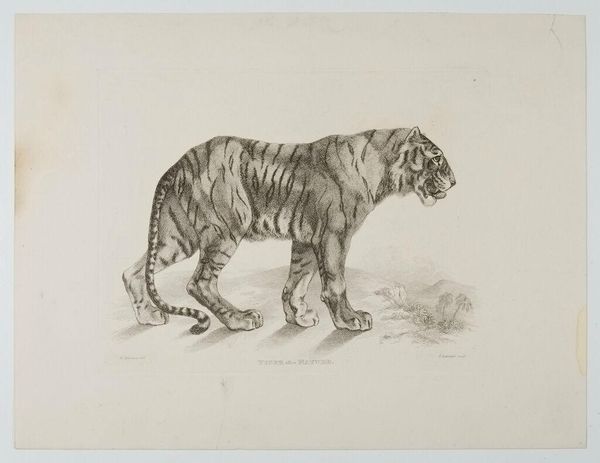
drawing, pencil
#
drawing
#
pencil sketch
#
landscape
#
romanticism
#
pencil
#
realism
Dimensions: height 206 mm, width 242 mm
Copyright: Rijks Museum: Open Domain
Eugène Verboeckhoven rendered this drawing of a tiger with graphite, sometime in the 19th century. Here, the tiger stands as a symbol of raw power and untamed nature. Across cultures, the tiger has long been revered— from the Far East, where it symbolizes courage, to ancient Rome, where tigers were displayed as exotic symbols of imperial power. Think of the fierce animals that decorate tapestries and armorial bearings. The tiger’s stripes, bold and distinctive, act as both camouflage and a statement of identity. Like a heraldic emblem, they speak of individuality but also of belonging to a primal order. As you gaze into its eyes, do you not feel the pull of the wild, a connection to the visceral and untamed aspects of our own psyches? It is a reminder that we are, in essence, never too far removed from our primal selves. This motif continues to evolve, mirroring our shifting relationship with nature and our understanding of its place within us.
Comments
No comments
Be the first to comment and join the conversation on the ultimate creative platform.
